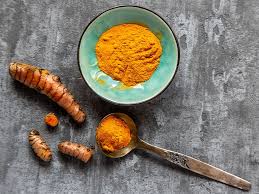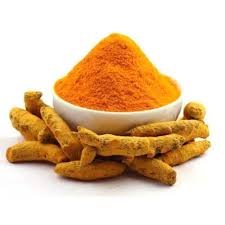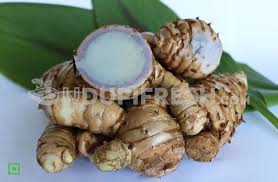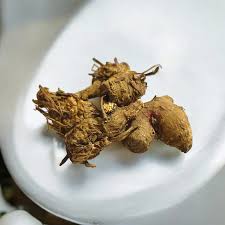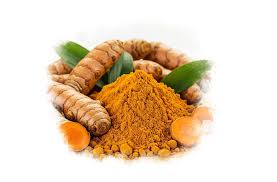At Dirghaanshi, we believe that balance is the key to living a healthy, vibrant life, and one of the best ways to achieve that balance is through the ancient wisdom of Ayurveda. Ayurveda teaches us that the body's health and wellness are governed by three primary energies, known as doshas: Vata, Pitta, and Kapha. Each person has a unique combination of these doshas, and maintaining balance among them is crucial for both physical and mental well-being. Discover how Ayurveda can help you understand and balance your doshas for better health, vitality, and harmony in life.
The Ayurvedic Approach to Balancing Your Doshas
Ayurveda, a 5,000-year-old holistic healing system, emphasizes the importance of balance within the body, mind, and spirit. The foundation of Ayurveda is the concept of doshas, which are energies that govern various physical and mental processes in our bodies. By understanding your unique dosha constitution, you can make informed lifestyle choices, follow appropriate diets, and practice specific routines to maintain harmony and optimal health.
Understanding the Three Doshas: Vata, Pitta, and Kapha
Vata Dosha: Representing the elements of air and space, Vata governs movement, circulation, and breathing. Those with a predominant Vata dosha are typically energetic, creative, and quick-thinking, but when out of balance, they may experience anxiety, dryness, and irregular digestion.
Pitta Dosha: Associated with the elements of fire and water, Pitta governs digestion, metabolism, and energy production. People with a dominant Pitta dosha tend to be focused, driven, and strong-willed. When Pitta is imbalanced, it can lead to irritability, inflammation, and digestive issues.
Kapha Dosha: Comprising the elements of earth and water, Kapha controls growth, structure, and lubrication within the body. Those with a strong Kapha constitution are calm, stable, and compassionate. However, an imbalance in Kapha can lead to weight gain, sluggishness, and respiratory issues.
Each individual has a unique combination of these doshas, known as their prakriti or natural constitution. This determines their physical traits, emotional characteristics, and predispositions to certain imbalances. However, due to factors like stress, diet, or lifestyle changes, doshas can become imbalanced, leading to various health concerns.
Balancing Your Doshas with Ayurveda
The key to good health in Ayurveda is to maintain balance among your doshas. When your doshas are in harmony, your body, mind, and spirit function optimally. Here are some ways Ayurveda recommends for balancing your doshas:
1. Identifying Your Dosha Imbalance
The first step to achieving balance is understanding which dosha is dominant in your body and which one is out of balance. Ayurvedic practitioners use a combination of diagnostic tools such as pulse readings, tongue analysis, and lifestyle assessments to determine your dosha type. Common signs of imbalance include:
- Vata Imbalance: Dry skin, irregular sleep patterns, anxiety, constipation, and digestive issues.
- Pitta Imbalance: Acne, indigestion, irritability, inflammation, and heartburn.
- Kapha Imbalance: Weight gain, lethargy, congestion, water retention, and depression.
2. Adjusting Your Diet
Diet plays a significant role in balancing your doshas. Ayurvedic diets are personalized based on your dosha, lifestyle, and health concerns. Here’s a general guide to balancing each dosha:
- Vata Balance Diet: Warm, moist, and grounding foods, such as cooked grains, soups, and stews. Avoid raw and dry foods that can aggravate Vata.
- Pitta Balance Diet: Cooling, hydrating foods like leafy greens, cucumbers, and coconut. Avoid spicy, oily, and fried foods that can increase Pitta.
- Kapha Balance Diet: Light, dry, and stimulating foods like leafy greens, legumes, and whole grains. Avoid heavy, oily, and sugary foods that can increase Kapha.
3. Ayurvedic Herbs and Supplements
Herbs are an essential part of Ayurvedic healing. Many herbs are specifically used to balance the doshas. Some examples include:
- Vata Balance Herbs: Ashwagandha, ginger, and turmeric help calm Vata and improve digestion and circulation.
- Pitta Balance Herbs: Licorice, mint, and chamomile help cool the body and calm inflammation associated with Pitta.
- Kapha Balance Herbs: Trikatu, ginger, and turmeric help stimulate metabolism and reduce excess water retention.
4. Daily Routines (Dinacharya)
Ayurveda recommends establishing a daily routine (Dinacharya) to promote balance. This includes waking up early, practicing yoga and meditation, and performing self-care rituals like oil massage (Abhyanga) and tongue scraping. A consistent daily routine helps maintain dosha balance and enhances overall well-being.
5. Yoga and Meditation for Dosha Balance
Yoga and meditation are integral practices in Ayurveda. Each dosha benefits from different types of yoga poses and meditation techniques:
- Vata Yoga: Gentle, grounding poses such as Child’s Pose (Balasana) and Mountain Pose (Tadasana) help calm the mind and body.
- Pitta Yoga: Cooling poses such as Forward Bends and Legs-Up-the-Wall Pose (Viparita Karani) help reduce excess heat and inflammation.
- Kapha Yoga: Energizing poses like Sun Salutations and Standing Poses help stimulate circulation and energy.
6. Mindfulness and Stress Management
Stress is one of the primary causes of dosha imbalances. Ayurvedic practices such as mindfulness, pranayama (breathing exercises), and meditation can help manage stress and maintain emotional balance, which is crucial for physical health.
7. Seasonal Adjustments (Ritucharya)
Ayurveda also emphasizes the importance of adjusting your routine, diet, and lifestyle according to the seasons to maintain dosha balance. For example, during the summer, it's essential to focus on cooling practices to balance Pitta, while in the winter, warming foods and practices are recommended to balance Vata.





